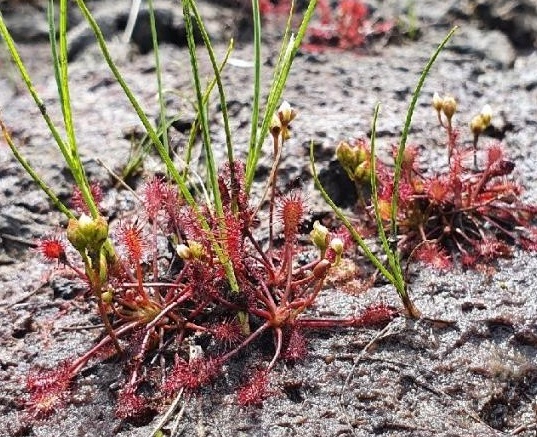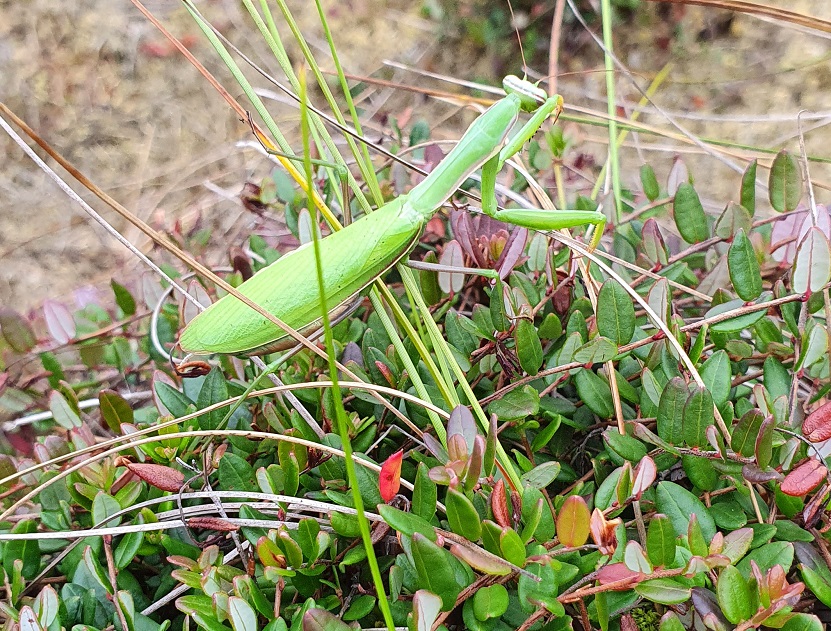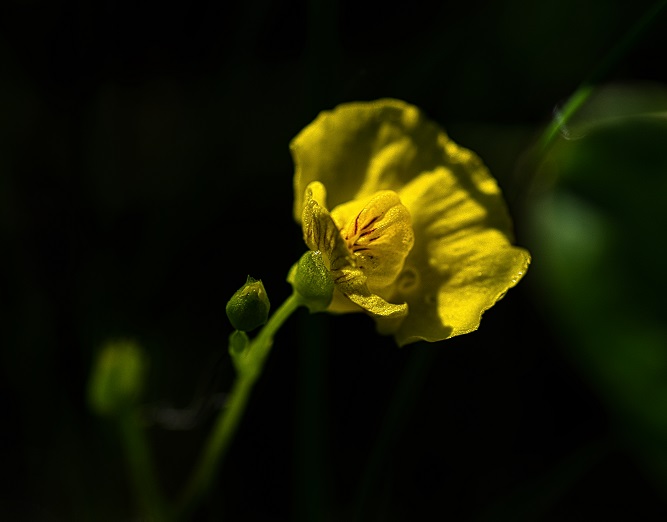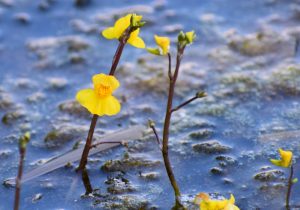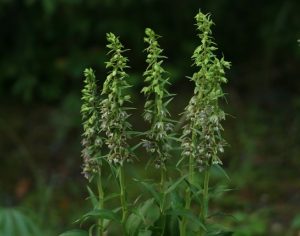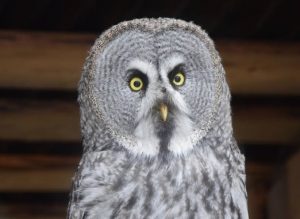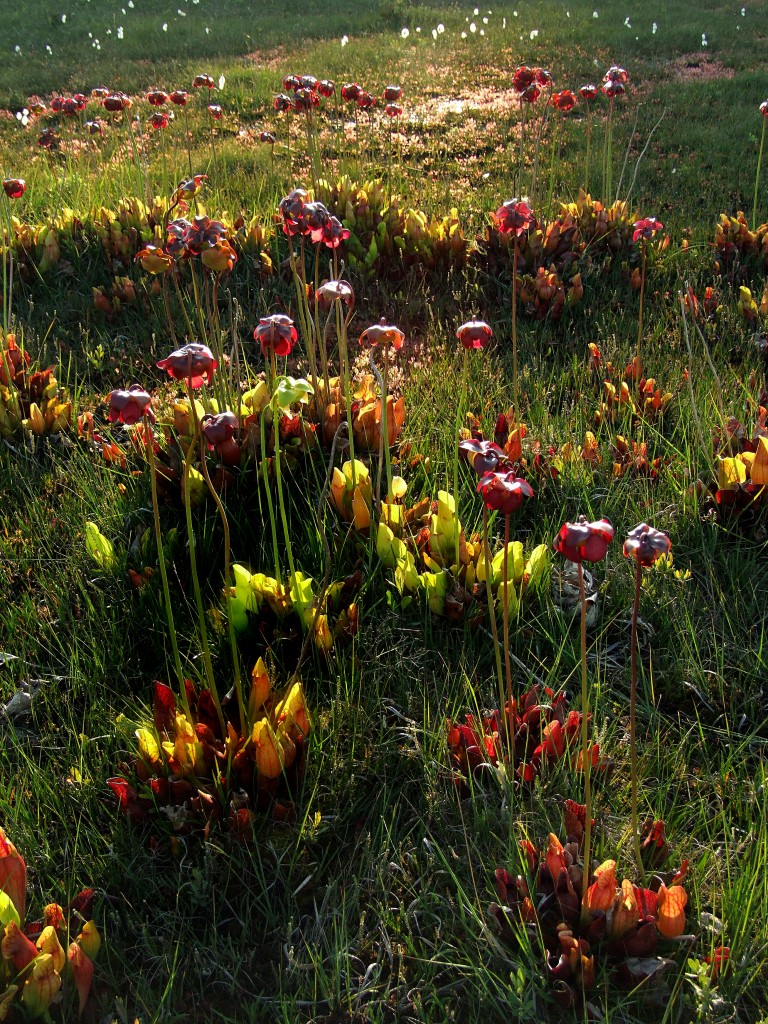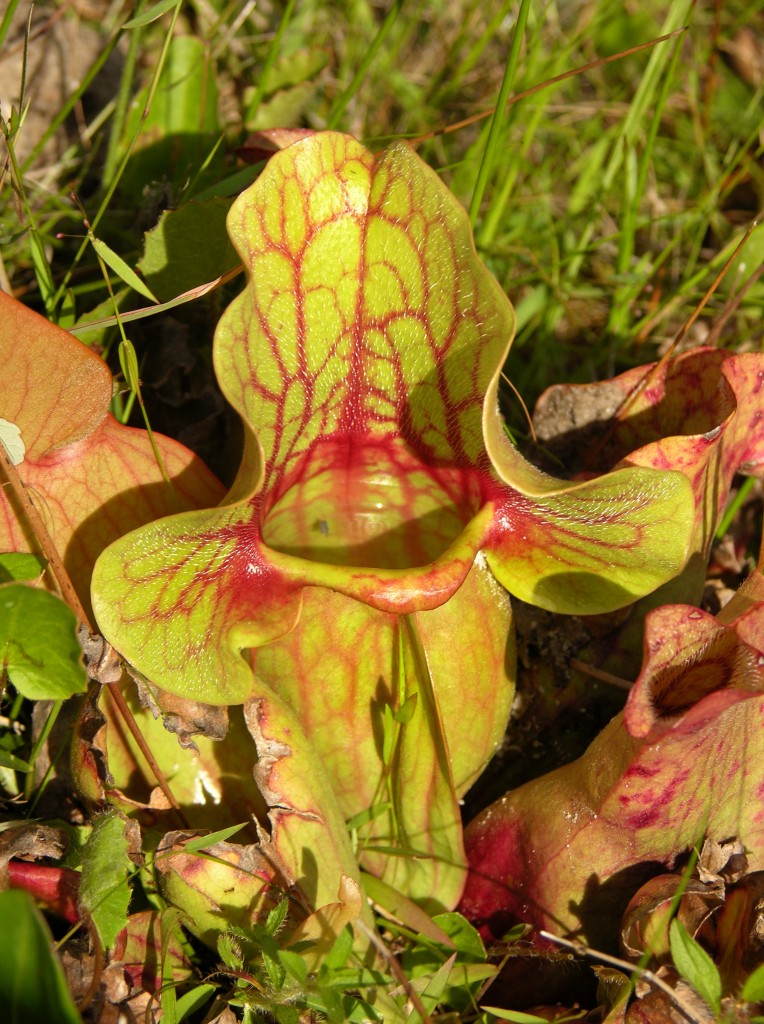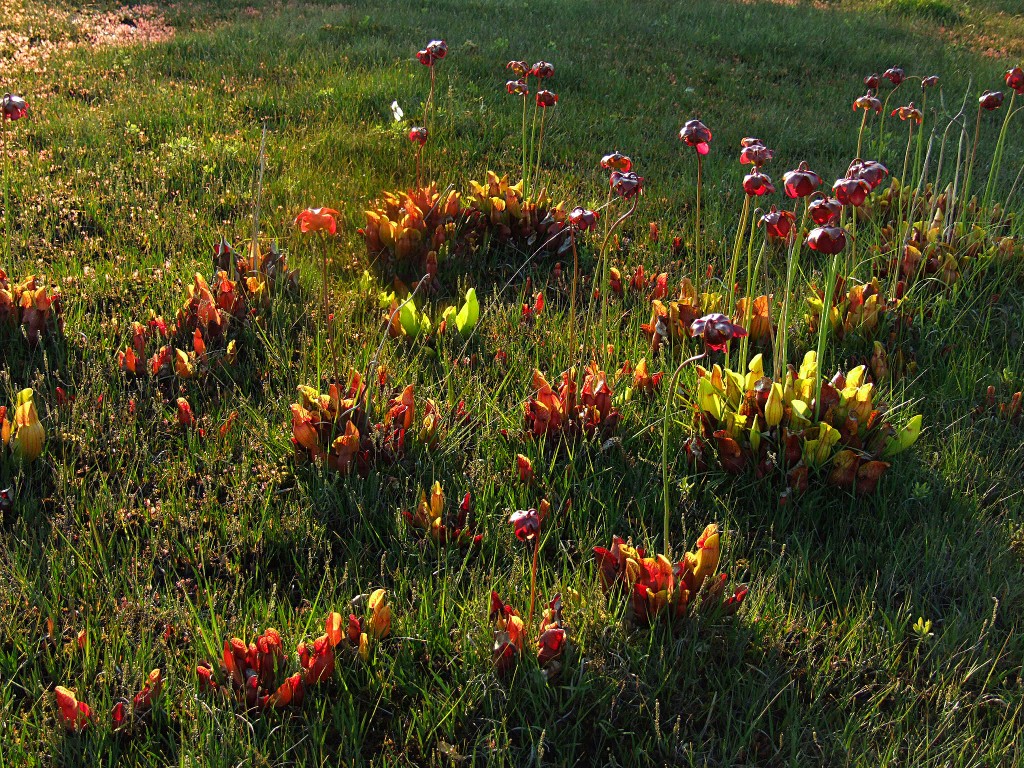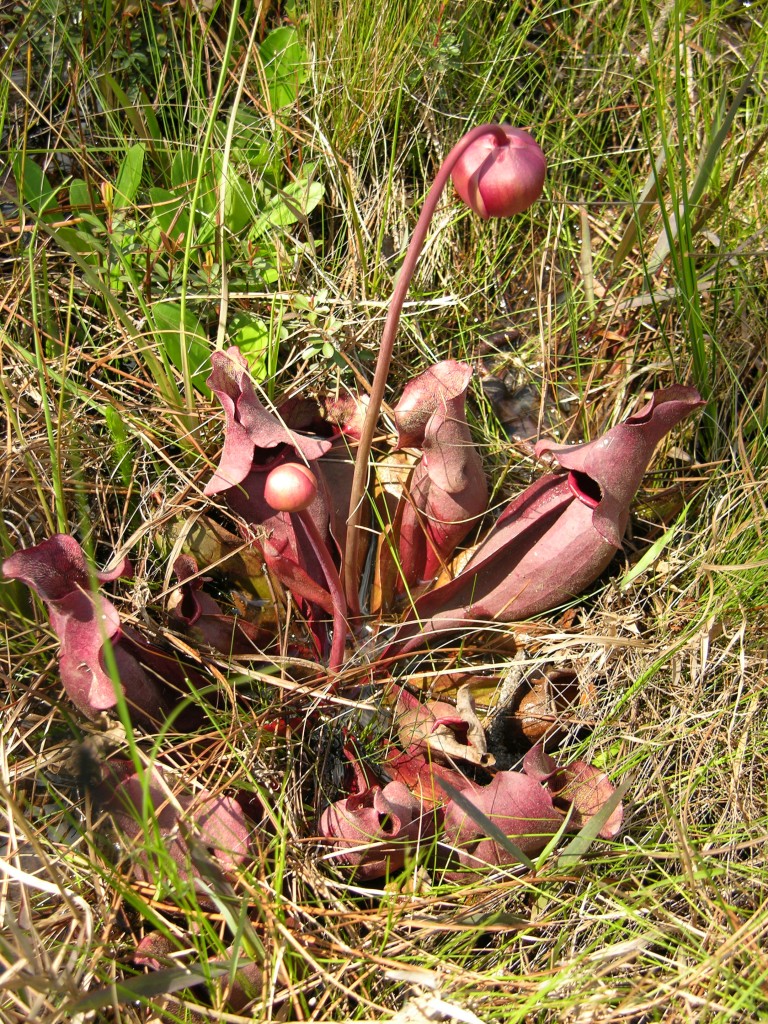At the start of the 18th century, the Canadian physician Dr. Michel Sarrazin secured twenty-five specimens of native North American pitcher plants which he sent to the French botanist Joseph Pitton de Tournefort for classification. Tournefort studied the strange, hollow, tubular leaves of the plants which Sarrazin had sent, and he soon established that the specimens represented a new genus of plants which he named Sarracenia in Sarrazin’s honour.
Today, eight species of Sarracenia are commonly recognized, all of which occur only in North America and nowhere else in the world. Seven species are found only in the warm-temperate south of the United States of America, particularly along the swamps of the Gulf of Mexico, whereas one species also occurs further north, along the eastern seaboard of the continent and across northern Canada. This northerly species likely represented many of the specimens which Sarrazin originally collected, and today it is named S. purpurea since it produces spectacular, predominantly purple flowers and leaves. Unlike the pitcher plants of Southeast Asia (Nepenthes), Sarracenia naturally experience cold conditions during the northern hemisphere winter, and S. purpurea is the most cold tolerant species of all, regularly experiencing conditions as low as -25ºC for prolonged periods through the winter. Often in midwinter, S. purpurea plants may be covered with ice or frozen solid for many weeks. Two subspecies of S. purpurea are commonly recognized, both produce stout, decumbent, fluid filled “pitchers” that are arranged in a compact, circular rosette. The pitchers of mature plants are up to 25 cm long and 6 cm wide, but usually are much smaller. Each pitcher-trap has a waxy interior surface, partly lined with inward pointing hairs. Prey is attracted to the leaf by secretions of sweet nectar, and falls from the slippery, surfaces into the fluid and, unable to escape, the victim eventually drowns in the fluid or dies of exhaustion or starvation. The remains of the prey accumulate at the bottom of the pitcher and are broken down through various processes to release soluble nutrients which the plant then absorbs directly.
Sarracenia purpurea has a long history in horticulture in temperate regions of the world owing to the ease by which it may be cultivated and propagated. The first records of S. purpurea being grown in England date back to 18th century, and for the last 150 years onwards, this plant has been commercially available and has become increasingly widespread and popular in horticultural circles. Today, the United Kingdom is home to several specialized Sarracenia nurseries, as well as several national collections of Sarracenia and the British Carnivorous Plant Society. Ever since this plant has been grown in England, horticulturalists have attempted to introduce it (as well as many other non-native plant species) into the wild. The habitat and environmental conditions of Britain is broadly comparable to many parts of the natural range of S. purpurea, and many populations of this species have become established, and several have flourished in the wet peatlands of England.
I grew up in the South of England, and close to my home, there is a long-established colony Sarracenia purpurea plants growing in the middle of a peat bog in Wareham forest. This naturalized population of pitcher plants has existed since before I was borne, and it is not clear who originally introduced the plants or when. Over the last 10 years, I have frequently visited this population and observed the colony grow. Currently, the colony of Sarracenia purpurea consists of approximately two hundred juvenile plants and seventy mature ones, many of which have formed large, established clumps. At least one hundred flowers are produced annually, large quantities of seed and juvenile plants arise each year. The population is certainly expanding, and has doubled in size over the last five years or so.
The ethics of introducing Sarracenia or any other non-native species into non-natural habitats is very questionable. Although this species is attractive and interesting, the introduced populations in England may dramatically alter the natural dynamics of the native ecosystem. For example, S. purpurea, as a carnivorous plant, preys upon insects – especially winged arthropods. The introduction of a large, non-native population such as that at Wareham may severely impact the abundance of insects – particularly pollinators, which may bring about profound changes to the pollination and reproductivity of other native plant species. Or the impact may be more direct, and the pitcher plants may physically dominate their adopted wetland habitat and outcompete or displace native species. For these reasons, in England, and most other countries, the introduction of non-native plant and animal species is prohibited by law. In recognition of this, the local wildlife authorities have repeatedly attempted to destroy the population of Sarracenia purpurea growing at Wareham. In 2004, most mature plants were sprayed with a herbicide and generally killed, but in the last two years, but the population has recovered strongly and is more populous than ever.
It seems difficult or impractical to fully eradicate the unnatural population of S. purpurea at Wareham, since this plant is an extremely resilient illegal alien. Although Sarracenia purpurea grows only in very specific habitat types, namely acidic, wetland bogs, and is unlikely to spread widely for the discontinuity of its adopted habitat, this population does need to be managed and monitored closely. The most practical and effective means to control the population may be to remove the flowers on an annual basis which will prevent the species from reproducing and spreading further. Clearly the impacts of a single individual releasing non-native plant and animal species into unnatural habitats may be profound and long lasting. Regardless of how interesting or beautiful plants may be, we do have a responsibility to protect and maintain the natural ecosystems of each region of Earth to prevent the breakdown of biotic systems and the loss of bio-diversity.
Stewart McPherson
